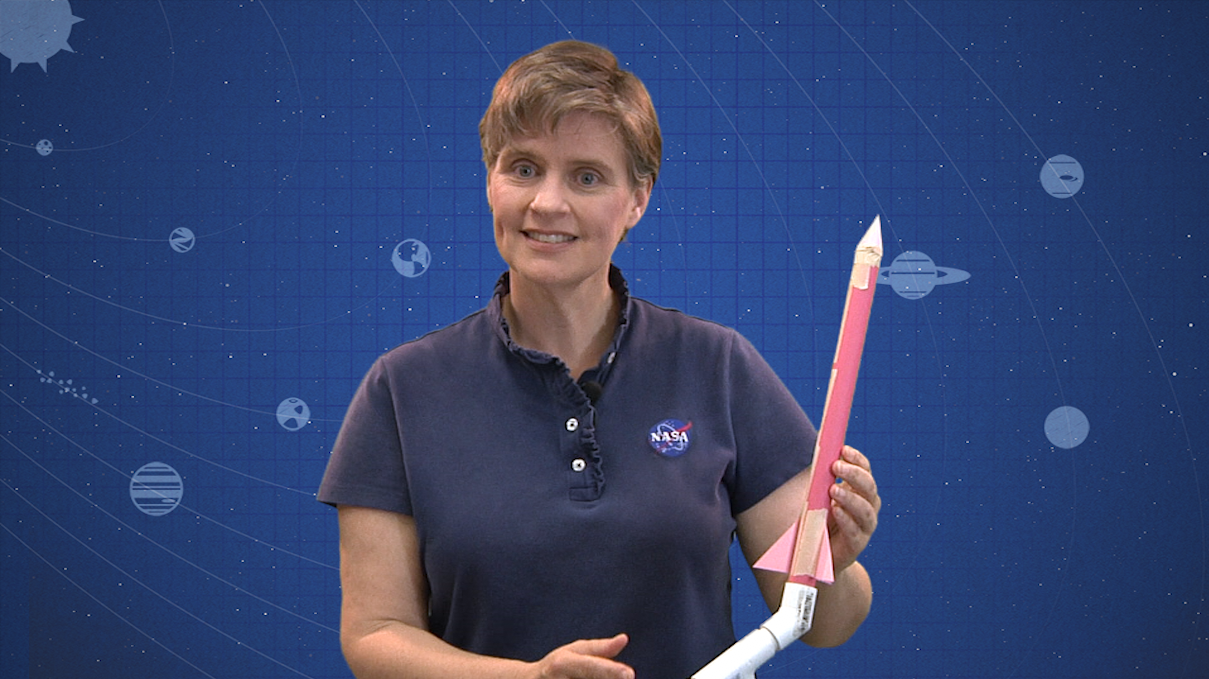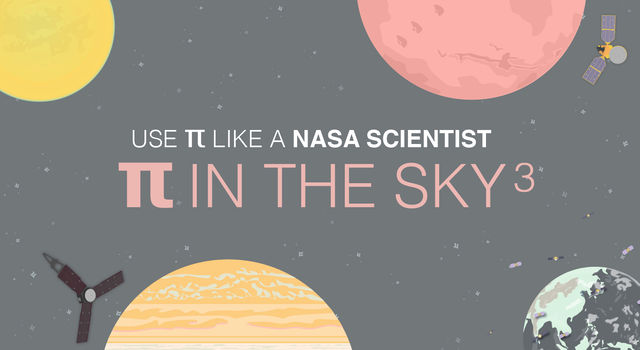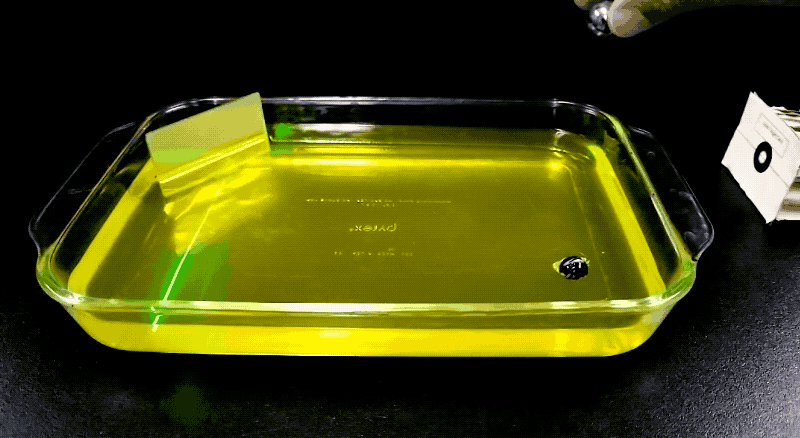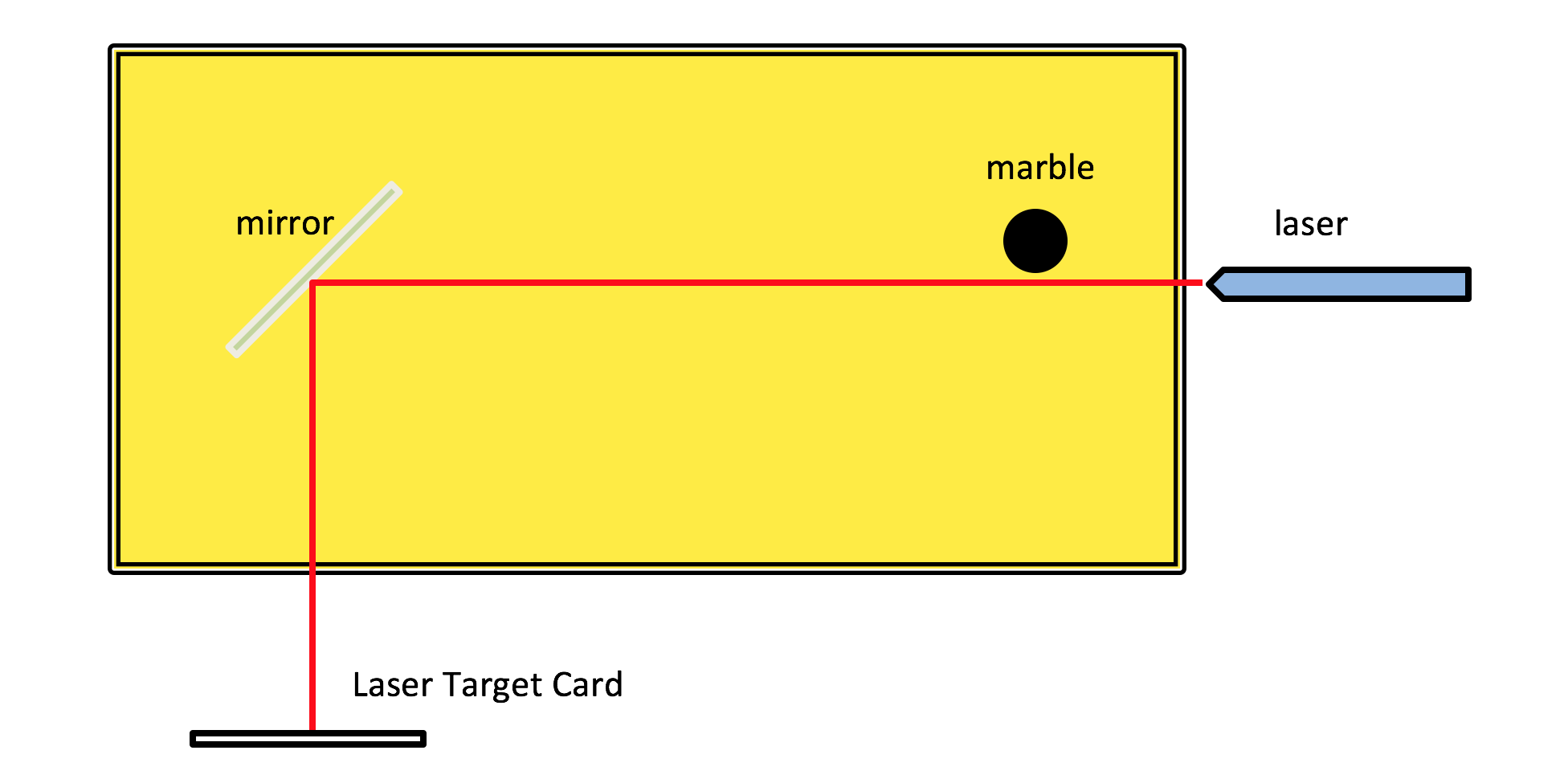Classroom Activity
Dropping In With Gravitational Waves
This activity is related to a Teachable Moment from March 23, 2016. See "Modeling Gravitational Waves."
Overview
Students develop a model to represent the collision of two black holes, the gravitational waves that result and the waves' propagation through spacetime.Materials
Management
- The model can be developed in pairs, small groups, larger groups, or as a whole class demonstration, depending on availability of materials.
- The gelatin should be made and set in advance of creating the model.
- The pan provides a lot of structural support for the gelatin. Taking the gelatin out of the pan and inserting a mirror makes the gelatin more susceptible to rough edges and tears that will affect the model. You can avoid this by using a clear pan (without textures in the glass that would affect the path of the laser beam). This way the gelatin can be kept in the pan. In this case, skip steps 2 and 4 in the "Procedures" section below, and press the marble into the gelatin after it sets so that the marble is flush with the surface. This provides more stability to the gelatin and keeps the edges smooth, reducing the amount of scattering that the laser beam experiences.
Safety Note: Lasers are a potential hazard because they can burn the retina of the eye. Avoid direct eye exposure and take caution when pointing a laser at a mirror to avoid accidental reflections of a laser beam into anyone’s eyes.
Background
A century ago, Albert Einstein theorized that when objects move through space they create waves in spacetime around them. These gravitational waves move outward, like ripples from a stone moving across the surface of a pond. Little did he know that 1.3 billion years earlier, two massive black holes collided. The collision released massive amounts of energy in a fraction of a second (about 50 times as luminous as all the stars in the visible universe combined) and sent gravitational waves in all directions. On September 14, 2015 those waves reached Earth and were detected by researchers at the Laser Interferometer Gravitational-Wave Observatory (LIGO).
Why Is It Important?
Einstein published the Theory of General Relativity in 1915. In it, he predicted the existence of gravitational waves, which had never been directly detected until now. In 1974, physicists discovered that two neutron stars orbiting each other were getting closer in a way that matched Einstein’s predictions. But it wasn’t until 2015, when LIGO’s instruments were upgraded and became more sensitive, that they were able to detect the presence of actual gravitational waves, confirming the last important piece of Einstein’s theory.
It’s also important because gravitational waves carry information about their inception and about the fundamental properties of gravity that can’t be seen through observations of the electromagnetic spectrum. Thanks to LIGO’s discovery, a new field of science has been born: gravitational wave astronomy.
How Did They Do It?
LIGO consists of facilities in Washington and Louisiana. Each observatory uses a laser beam that is split and sent down 2.5-mile (4-kilometer) long tubes. The laser beams precisely indicate the distance between mirrors placed at the ends of each tube. When a gravitational wave passes by, the mirrors move a tiny amount, which changes the distance between them. LIGO is so sensitive that it can detect a change smaller than 1/10,000 the width of a proton (10-19 meter). Having two observatories placed a great distance apart allows researchers to approximate the direction the waves are coming from and confirm that the signal is coming from space rather than something nearby (such as a heavy truck or an earthquake).
Update – Oct. 3, 2017: Researchers Kip Thorne and Barry Barish of Caltech and Rainer Weiss of MIT have been awarded the 2017 Nobel Prize in Physics for their “decisive contributions to the LIGO detector and the observation of gravitational waves.”
Thorne, Barish and Weiss played key roles in making the LIGO project a reality through their research, leadership and development of technology to detect gravitational waves.
In a statement to Caltech, Thorne said the prize also belongs to the more than 1,000 scientists and engineers around the world who play a part on LIGO, the result of a long-term partnership between Caltech, MIT and the National Science Foundation.
Procedures
- Prepare the gelatin according to the package directions and pour it in the baking pan. Be sure enough gelatin fills the pan that the mirror will be mostly or completely covered when it’s inserted (step 5).
- Place a marble or pebble in one corner of the gelatin, about one inch from the sides of the pan, and allow it to sink to the bottom.
- Allow the gelatin to completely set.
- Once the gelatin is firm, place a flat portable surface (such as a cutting board or a cookie sheet) on top of the pan, gently flip the pan and remove the gelatin from the pan.
- Press the mirror into the gelatin at a 45-degree angle opposite the marble. Be sure to put the mirror far enough away from the edges of the gelatin that the gelatin stays intact.
- Pointing through the gelatin from the side closest to the marble, aim the laser at the mirror and secure it so it doesn’t move (e.g., by taping it to a book or binder). Use tape or a binder clip to hold down the laser’s on-button.
- Place the Laser Target Card outside the gelatin in the path of the reflected laser. Secure it so the card is stationary (e.g., by taping it to a book, binder or the side of the clear baking pan).
- With the laser and Laser Target Card steady, drop a second marble on the marble that is set in the gelatin.
In this model, the gelatin represents spacetime. The collision of the marbles represents the collision of two black holes. The vibrations in the gelatin represent the gravitational waves, and the movement of the laser on the marker card indicates the presence of gravitational waves.
Discussion
- For this model, we assume that spacetime extends beyond the gelatin and that the laser and Laser Target Card are also in spacetime. Ask students why the model is limited in this way and how it might affect the model.
Answer: Extending the gelatin (spacetime) to encompass the laser and Laser Target Card would require a much larger container and a greater amount of gelatin. It would also mean submerging a laser in gelatin long enough for it to set, and developing a method for turning the laser on while in the gelatin. - Yellow or clear gelatin is used in this model. Ask students to explain why.
Answer: Other colors may absorb the laser pointer’s light which is most commonly green or red.
Assessment
- What happens to the laser beam when the marble is dropped on the second marble? Why?
- What are some limitations of this model?
- How could this model be improved?
Extensions
- Use a mobile device and record a video using the slow motion feature or the high-frame rate setting. This will allow students to view a slow-motion playback and see some of the elements of the model and how they move in response to the collision in more detail.
- Add markings (cm, mm, or non-standard units) to the Laser Target Card and drop the marble from different heights to see how that affects the motion of the beam on the target.
Explore More
- Gravitational waves news, videos and resources
- Laser Interferometer Gravitational-Wave Observatory (LIGO) Website
Check out these related resources for kids from NASA’s Space Place:













